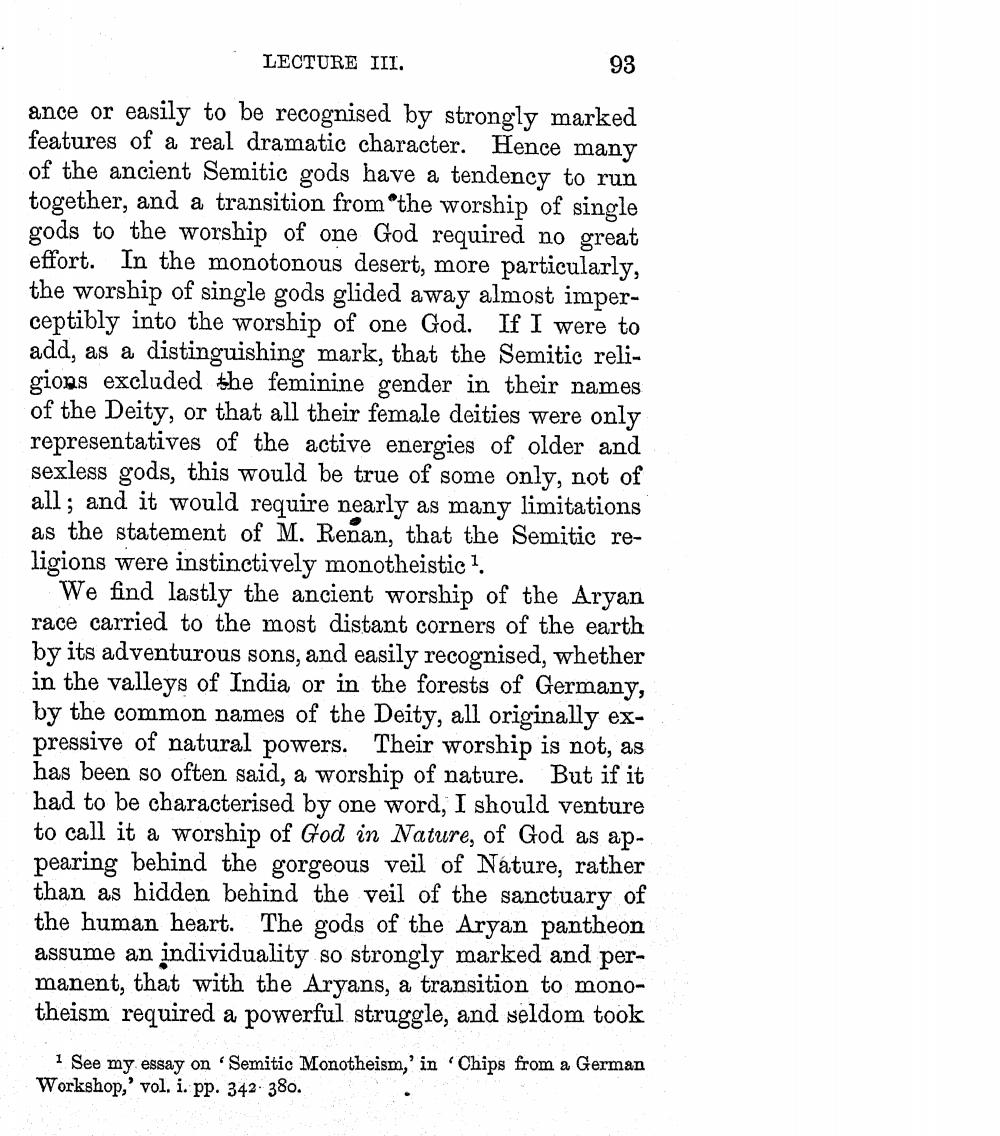________________
LECTURE III.
93
ance or easily to be recognised by strongly marked features of a real dramatic character. Hence many of the ancient Semitic gods have a tendency to run together, and a transition from the worship of single gods to the worship of one God required no great effort. In the monotonous desert, more particularly, the worship of single gods glided away almost imperceptibly into the worship of one God. If I were to add, as a distinguishing mark, that the Semitic religions excluded the feminine gender in their names of the Deity, or that all their female deities were only representatives of the active energies of older and sexless gods, this would be true of some only, not of all; and it would require nearly as many limitations as the statement of M. Renan, that the Semitic religions were instinctively monotheistic 1.
We find lastly the ancient worship of the Aryan race carried to the most distant corners of the earth by its adventurous sons, and easily recognised, whether in the valleys of India or in the forests of Germany, by the common names of the Deity, all originally expressive of natural powers. Their worship is not, as has been so often said, a worship of nature. But if it had to be characterised by one word, I should venture to call it a worship of God in Nature, of God as appearing behind the gorgeous veil of Nature, rather than as hidden behind the veil of the sanctuary of the human heart. The gods of the Aryan pantheon assume an individuality so strongly marked and permanent, that with the Aryans, a transition to monotheism required a powerful struggle, and seldom took
1 See my essay on 'Semitic Monotheism,' in 'Chips from a German Workshop,' vol. i. pp. 342 380.




